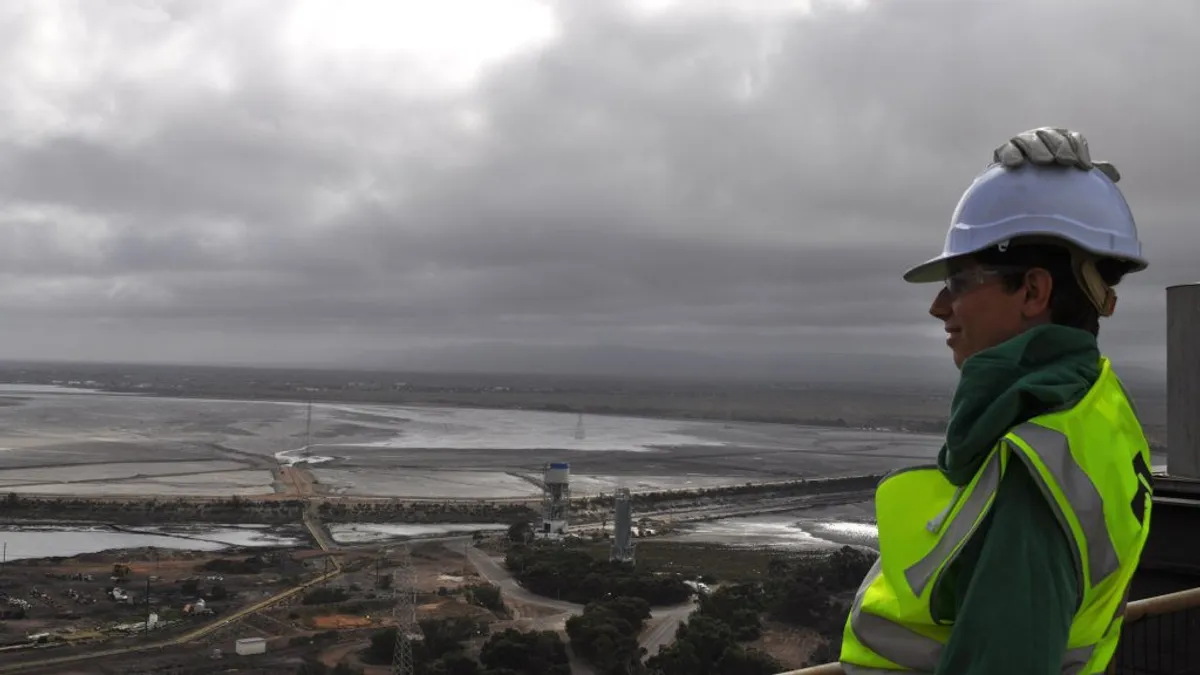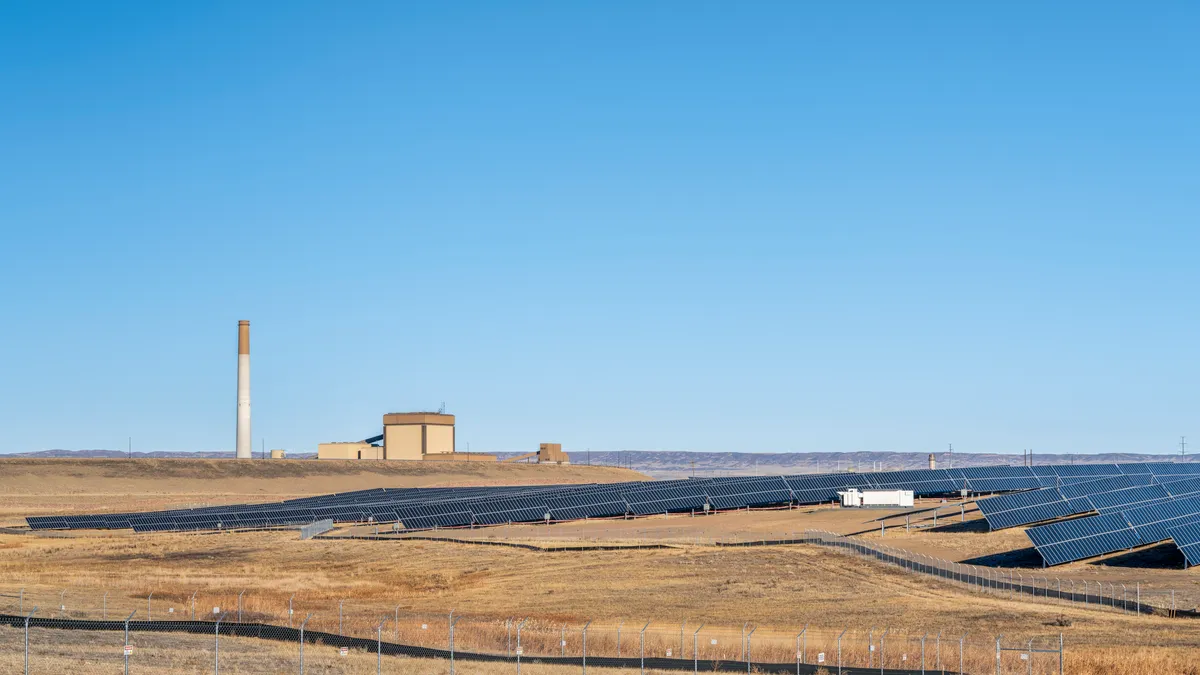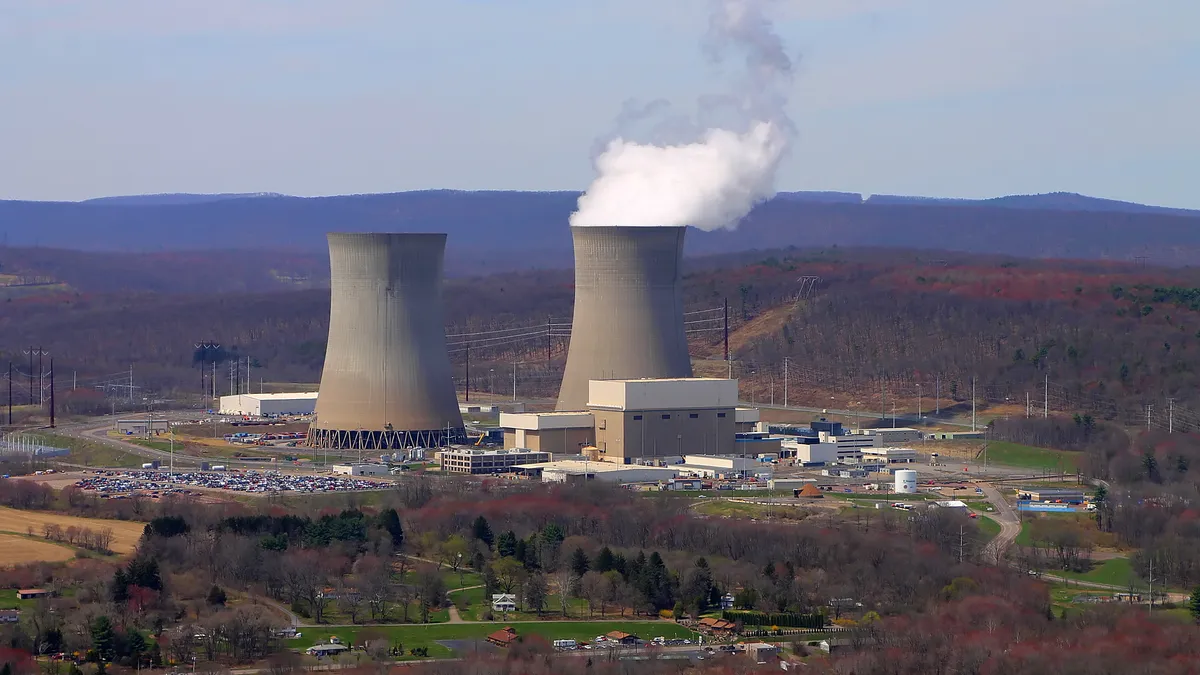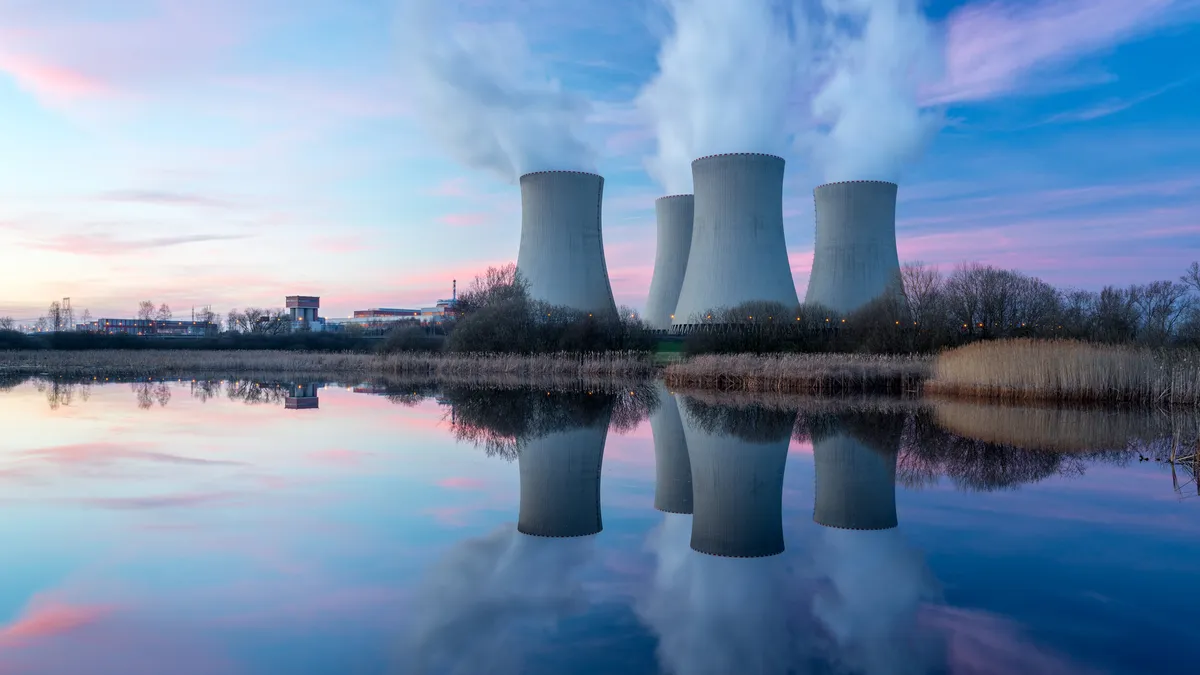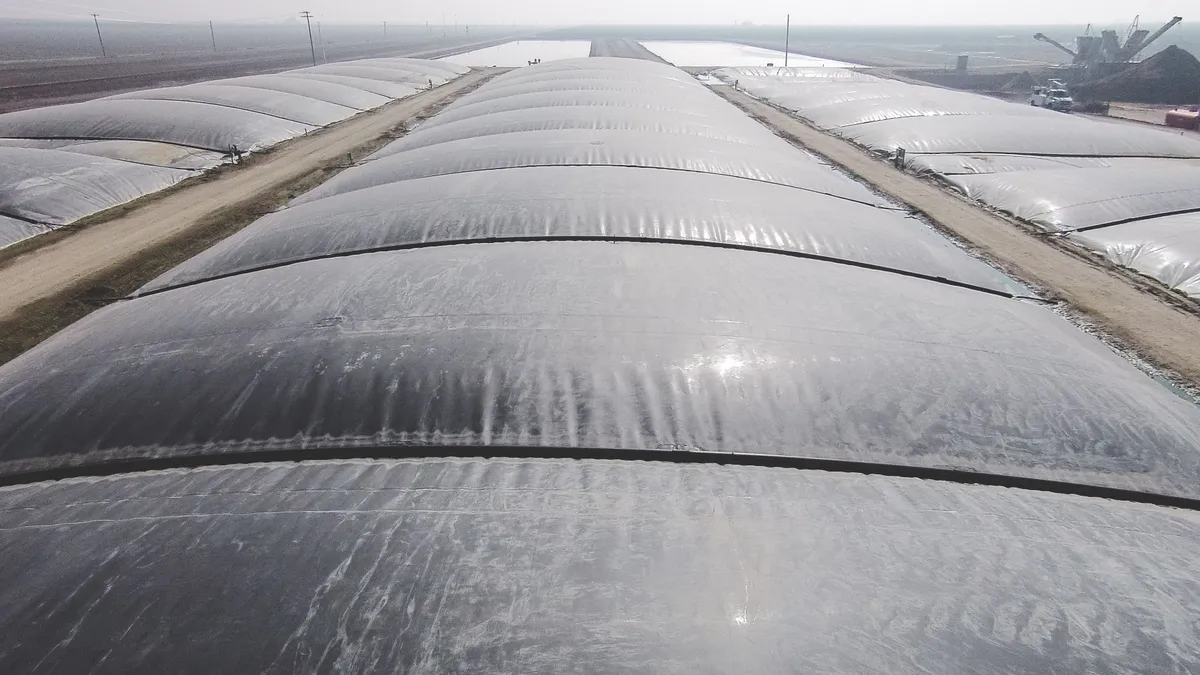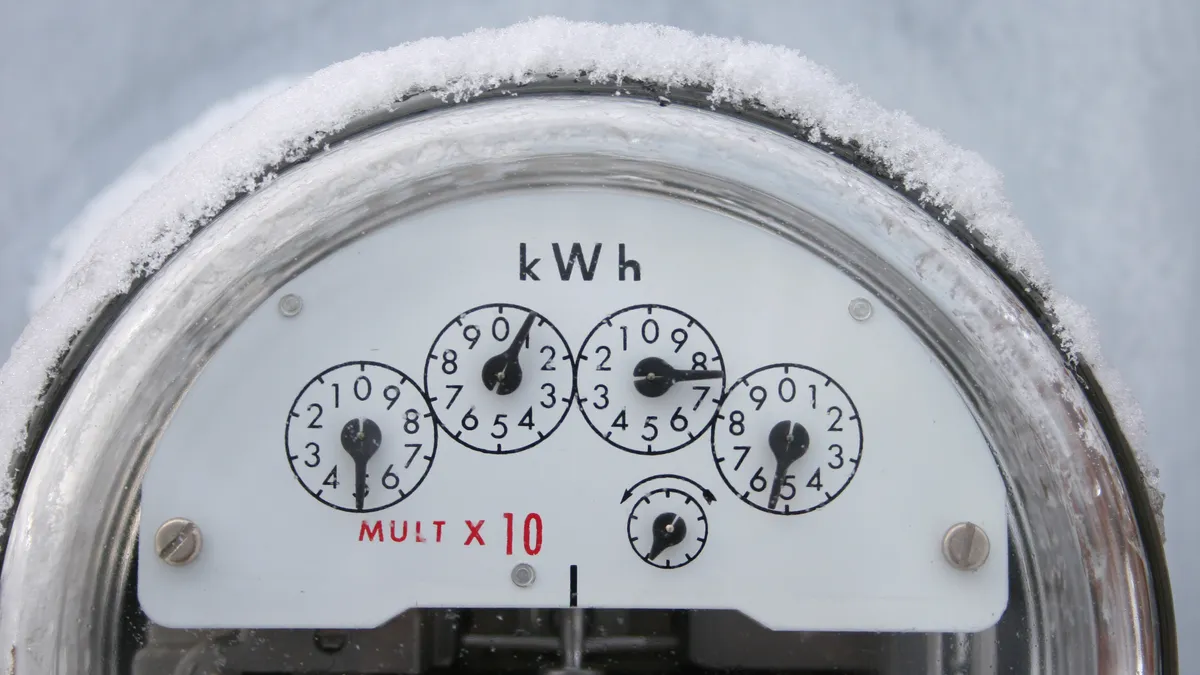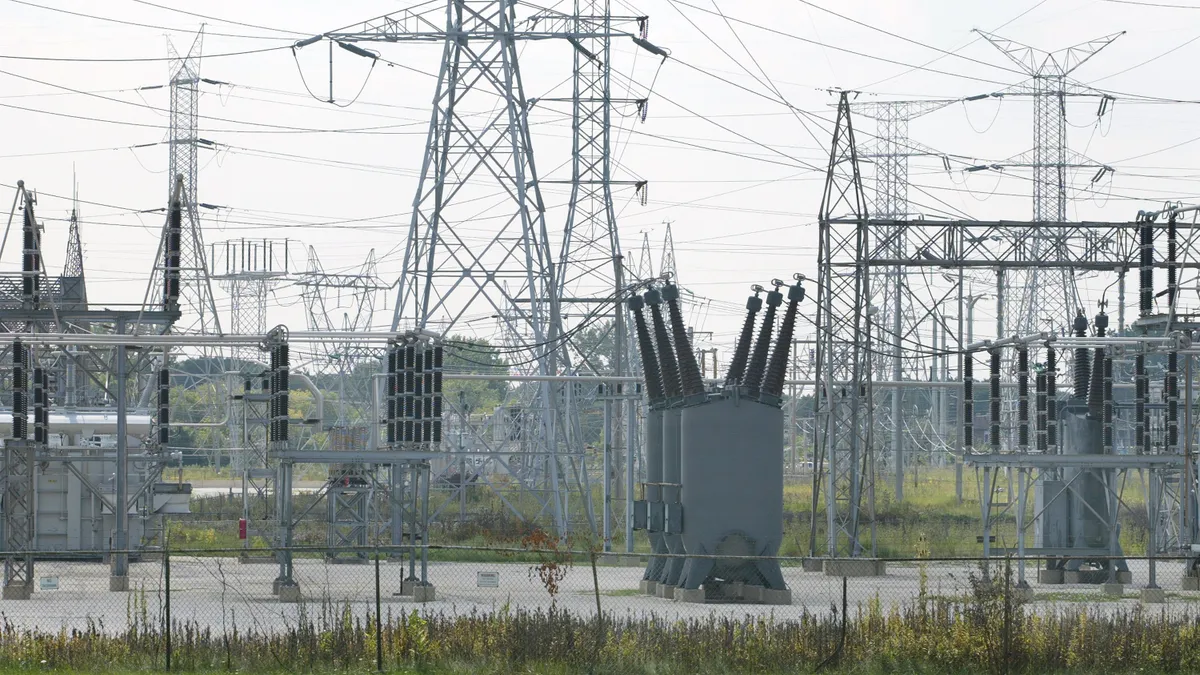When it comes to dealing with the consequences of coal ash, the residents of one affected North Carolina community have a simple request for utilities: "Wake up."
That was the message from Doris Smith, a community member who testified at an emotional hearing last month in Walnut Cove, NC.
The meeting, held by the North Carolina Advisory Committee to the U.S. Commission on Civil Rights, sought information on the consequences of coal ash at Duke Energy's nearby Belews Creek power plant for miniority and low-income residents. In the past, elements from the coal byproduct have found their way into local drinking water, and some residents expressed concern that the ash has contributed to abnormally high rates of cancer, neurological disorders and heart disease, a charge Duke contests.
"Get it out of here because it’s affecting people every day,” Smith told committee members, according to the Winston-Salem Journal.
The Walnut Cove meeting is just one of many hearings scheduled across the nation to provide information for the federal Civil Rights Commission’s planned 2016 Enforcement Report, which will investigate potential cases of environmental injustice, particularly involving coal ash.
But greater public scrutiny over coal ash is not only coming from the USCCR. Across coal-heavy states, utility sector stakeholders have put an increased emphasis on coal ash management in the past two years, stemming in part from the finalization of the EPA’s first federal coal ash regulation in 2014. Just last week, the North Carolina Department of Environmental Quality released new classifications for Duke Energy’s 14 coal ash ponds in the state, which could see the utility excavate all of them by 2024.
With greater attention coming from federal commission hearings, citizen suits and press coverage, affected communities and advocacy groups are questioning whether the federal coal ash rule and state regulations are doing enough to clean up the toxic waste facilities. At the same time, utilities such as Duke Energy say the structure of the CCR rule, coupled with state requirements, makes it difficult and costly to comply.
The federal rules
The 2014 EPA Coal Combustion Residual Rule was intended to provide a path forward for utilities and states trying to manage coal ash.
The EPA’s first national regulation for coal ash waste disposal, the CCR rules established technical requirements for coal combustion residual landfills and surface impoundments under subtitle D of the Resource Conservation and Recovery Act (RCRA).
By placing coal ash under subtitle D — and not subtitle C — of RCRA, the regulation designated coal ash a solid waste, rather than a hazardous one. The former distinction carries less stringent disposal requirements.
The rule is also self-implementing, meaning that while utilities must comply with the standards, the federal government cannot enforce the regulations itself. Rather than a set of directives for how utilities should handle their coal ash, the ruling simply sets minimum requirements under which they could face legal action.
Josh More, a utility lawyer at the firm Schiff Hardin LLP, told Utility Dive, that compliance with the regulation is in large part up to the utilities, and enforcement falls largely to citizen lawsuits.
“The federal government sets the standards and then the stakeholders — the utilities — are in charge of implementing it with no direct federal enforcement authority,” he said. “The standards are enforced and there is no direct state enforcement authority either — it’s all enforced through citizen suit provisions, and a state can bring a citizen suit.”
While state agencies, citizen groups and individuals can bring suits to enforce the standards, the U.S. government, including EPA, cannot bring an enforcement action for an alleged violation of one of the standards. In its December 2014 fact sheet on the CCR ruling, in fact, the EPA makes it clear that utilities must comply “without the engagement of another state or federal regulatory authority.”
The role of states
In lieu of offering specific implementation guidelines, the EPA encourages, but does not require, states to develop solid waste management plans to include and voluntarily exceed federal minimum standards. However, they must also be approved by the EPA, operate parallel to the regulation, and be subject to dual enforcement in respective state and federal courts, according to More.
“States don't have direct oversight. They can create their own program to implement the federal rule but that is not a program that operates in lieu of the federal program,” More said. “If the state had a program,it would act in parallel, and the plant would be subject to dual enforcement in respective state and federal courts.”
“Kansas is the only state with an EPA-approved solid waste management plan (SWMP) that addresses the issuance of the CCR rule,” an EPA spokesperson wrote to Utility Dive in an email. “In addition, Kansas is the only state that has formally submitted a SWMP for EPA review and approval; however, EPA continues to work with states on their SWMPs.”
The self-implementation rule has some community and environmental groups wondering whether the EPA regulation, with enforcement authority in the hands of citizens, actually holds utilities accountable.
Frank Holleman, a senior attorney at The Southern Environmental Law Center (SELC), an environmental citizen advocate group that has been working on behalf of community residents in areas surrounding coal ash plants, believes that citizen suits have actually been effective in the past.
“Citizen enforcement is far more effective than state enforcement generally ... citizens can enforce a law and bring to light civil and criminal conduct which can result in utility liability and prosecution,” he said. “Any executives that try to skirt this rule would be acting at great peril both for him or herself personally and also for his or her respective utility.”
The caveat he offered on citizen prosecution for issues related to coal ash, though, circled back around to the role of the states.
“We have seen that state regulators by and large have been absolutely ineffective and sometimes absolutely hostile to citizen law enforcement. Often they are under the influence of or intimidated by utilities,” he said. “In an ideal world we have effective state enforcement standards plus strong national requirements if the state authorities were to do their jobs and carry out their responsibilities.”
North Carolina
Holleman mentions North Carolina as one of the states where utilities and their stakeholders have been butting heads over the handling of coal ash. The state gained national attention for coal ash in 2014 when a pipe at one of Duke Energy’s steam plants near Eden, North Carolina ruptured and released 39,000 tons of toxic sludge into the Dan River.
Since this incident, considered the third-largest accident of its kind in national history, Duke Energy, the North Carolina Department of Environmental Quality (DEQ), and the surrounding communities have dealt with the consequences of the toxic wastewater.
The spill, which wasn’t stopped until after six days, released 27 million gallons and coated a 70-mile stretch of the river with toxic sludge. The state issued a $6.6 million fine to Duke Energy in February, two years after the initial accident.
North Carolina’s efforts to deal with coal ash predate the EPA’s final ruling on a CCR regulation. Because it is one of a handful of states in the nation with official legislation to mandate handling of wet coal ash — the Coal Ash Management Act of 2014 — utilities must dually address the EPA regulations and state requirements.
Duke Energy, the state's major investor-owned utility, has a total of 150 million tons of ash at its 14 coal plants in North Carolina. Mark McIntire, director of environmental policy at Duke, told Utility Dive the company faces more stringent standards from the CAMA rather than the federal regulation.
“The NC law came before the CCR [rule],” he said. “We find that NC CAMA that is specific to NC is generally driving decision making on a management perspective on coal ash … From a comparison perspective the CAMA is generally a good bit more stringent.”
McIntire noted the CCR rule doesn’t stipulate closure of coal ash ponds, nor contemplate a method by which they can be closed — it simply sets minimum requirements for coal ash waste disposal.
The CAMA, however, directs state environmental regulators to set timelines for closing the coal ash facilities. High risk classification requires full excavation in the closure process, and it has to happen by Dec. 31, 2019. Intermediate risk impoundments have to be excavated by the end of 2024. Low ranked impoundments have to be closed by 2029, but not necessarily excavated.
Last week, the DEQ released a ruling that classified eight of Duke’s coal ash ponds as high priority and the rest as intermediate, meaning the utility would have to completely excavate each of its basins. But at the same time, regulators said the law itself imposes deadlines that are too aggressive to allow for adequate cleanup and called on state lawmakers to amend the measure.
“The deadlines in the coal ash law are too compressed to allow adequate repairs to be completed,” Donald R. van der Vaart, DEQ secretary, said in a statement. “It also does not allow for revisions to the classifications based on new information about a pond’s risk to public health and the environment.”
Though the information available to DEQ during its review necessitated the high and intermediate rankings, van der Vaart said they could change as current cleanup efforts continue.
“Duke Energy has submitted a study that evaluates the feasibility of supplying permanent alternative water to nearby residents [to coal ash facilities],” DEQ said. “The state environmental department will recommend to the General Assembly that the classifications be re-evaluated after the dam safety repairs are made and the utility provides these permanent alternative water sources to nearby well owners.”
Duke Energy and accountability
Duke CEO Lynn Good welcomed the DEQ classifications as an “important milestone” in the cleanup process last week, but also noted that the ruling "acknowledges that all basins except those already designated as 'high' could be ranked 'low' once that work is done and other steps are taken."
The call from DEQ to revise the coal ash act itself highlighted what green groups say is a long history of the regulatory body’s lax enforcement of Duke. Before the classifications, Holleman called the law “a complicated bureaucratic act that Duke Energy is trying to use to protect itself from having to excavate the coal ash from all its unlined pits.”
Despite the initial classifications, his organization viewed the DEQ ruling in a similar light.
“[T]his administration’s determination to bail out Duke Energy knows no end and, rather than stand up for impacted communities, DEQ now wants the law changed to give Duke Energy a do-over in 18 months," SELC said in a statement. "Requesting that the legislature revisit the law and requirements allows Gov. McCrory’s administration to say one thing to get through the election this fall, all subject to revision after the election."
DEQ, however, says it has stepped up coal ash enforcement since McCrory, a former Duke executive, came into office in 2013.
“Duke Energy has stored coal ash in unlined ponds throughout North Carolina for more than 60 years, yet special interest groups waited until Gov. McCrory was elected to sound the alarms,” Crystal Feldman, deputy secretary for public affairs at the NC DEQ, wrote in an email. “Gov. McCrory is the first governor in our state’s history to attack the decades-old problem of coal ash and hold Duke Energy accountable for its environmental violations.”
The proposed classifications would become final 60 days from their May 18 announcement, meaning legislators have until July 17 to revise the cleanup dates and requirements. The SELC, however, is not waiting that long to take action.
Last month, the organization announced it would sue Duke Energy for violating the Clean Water Act at its Mayo Steam Plant in Roxboro. Duke Energy is under criminal probation, as it pleaded guilty 18 times to violations of the Clean Water Act last year because of how it handled its coal ash waste.
Duke Energy believes that Clean Water Act litigation is unnecessary due to North Carolina laws governing ash disposal. Dawn Santoianni, lead communications consultant at Duke, wrote that the SELC’s lawsuit sidesteps the work of CAMA.
“Ash basins are being closed in ways that protect people and the environment, making this yet another unnecessary and wasteful legal fight by SELC,” she wrote in an email. “This is a deliberate effort to sidestep North Carolina’s Coal Ash Management Act (CAMA), which is the strongest in the nation and lays out a framework, schedule, public input process and regulation to ensure basins are closed safely.”
“This federal suit is duplicative and redundant since the same issues are being heard in state court,” she added. “SELC is choosing to bring a federal lawsuit rather than participate in the CAMA process.”
Holleman said that SELC has taken part in the CAMA process, but notes that even if the deadlines under the act stay the same, the first ponds will not completely close until the end of 2019. In the meantime, the organization alleges that the pond at the Mayo plant continues to leak pollution and affect the surrounding community, making its Clean Water Act litigation necessary.
“We have not avoided NC’s Coal Ash Management Act process,” Holleman said. “We have submitted extensive comments under the Act … and we and thousands of other citizens and organizations have submitted comments calling upon Duke Energy to remove its coal ash from leaking unlined pits and clean up its coal ash pollution.”
Regardless of the outcome of the Duke-SELC litigation, Schiff Hardin’s More points out that complying with the CCR ruling and excavating coal ash pits as indicated through CAMA can come with a number of challenges.
“The compliance obligations that this rule imposes are very costly,” he said. “It subjects the utilities to a set of requirements that they were never subject to before. So for example there is a requirement for extensive groundwater monitoring, standards for taking corrective action should there be exceedences of certain groundwater standards, certain ponds will have to be closed if there is a groundwater exceedance.”
More also said that there are also location restrictions. When a utility has to close a pond, it has to convert from a wet ash management system to a dry ash management system.
“The conversion is a time-intensive and costly endeavor,” he said.
Disposal still a work in progress
While North Carolina’s recent coal ash spills and litigation have attracted headlines, other states have made quieter progress in disposal of the generation byproduct.
While Kansas is the only state so far to address the CCR ruling, Pennsylvania has “an excellent permitting and enforcement program of all residual wastes, including CCR,” according to Michael Forbeck, past president of the Association of State and Territorial Solid Waste Management Officials.
Holleman also pointed South Carolina as an example, where the state’s three power utilities, South Carolina Electric and Gas (SCE&G), Duke Energy, and Santee Cooper, each agreed to remove all coal ash from unlined pits. A pending bill in the state legislature, however, would limit citizens’ ability to sue companies under state law for pollution issues, including coal ash.
The sheer size of the coal ash problem means that even as utilities and regulators implement cleanup plans, nearby communities will still need to deal with the consequences of the byproduct for years to come.
Despite some progress in state cleanup laws and regulations, the scale of the problem remains immense. Though they vary in size and design, there remain more than 1,400 coal ash sites around the nation. More than 200 have caused some sort of contamination of groundwater as of February 2014, according to the environmental legal group Earthjustice, which compiled a map using state and federal regulatory information:
Regardless of where they are, communities can expect heightened scrutiny from the federal Commission on Civil Rights. The agency has already held a number of public hearings regarding utilities to support its coming 2016 enforcement report and USCCR Chair Martin Castro said at the Walnut Cove hearing last month that communities dealing with ash would have him as “an advocate, not only here but in Washington.”
Castro said that he would “come up with some strong findings and recommendations,” which would then be included in recommendation reports to the president and Congress.
SELC’s Holleman says that in the meantime, utilities need to be proactive in cleaning up their ash facilities.
“The pollution that comes from these sites affects everyone. It affects our drinking water supplies,” he said. “It's in the entire interest of the community affected to deal with coal ash pollution, because it affects economic development, tourism, agriculture, public health, and the reputation of the community.”
And while his company may be battling Holleman’s organization in court and the regulatory halls, Duke Energy’s McIntire says he recognizes the importance of incorporating the communities into a conversation on the handling of coal ash.
“It’s important to understand that we’ve been apart of these communities for decades and decades. Our plant employees live in these communities. Their kids go to the same schools and churches and grocery stores ... These communities, every community, matters to us. They have been an important part of our company legacy for nearly a hundred years.”


